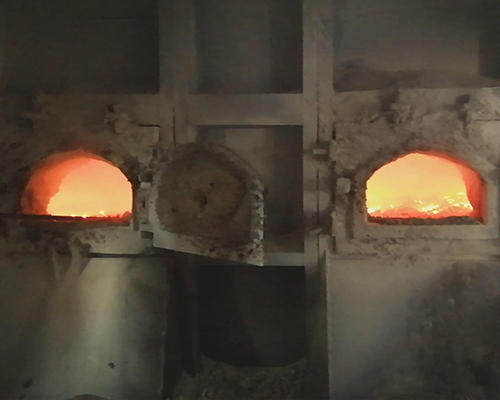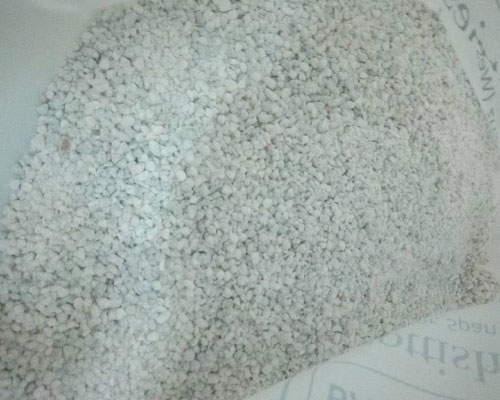Flux For Aluminum Melting is the solid substance (commonly mixtures of chloride and fluoride salts) used in Rusal aluminum foundries. Fluxes can reduce the melt oxidation, minimize penetration of the atmospheric Hydrogen, absorb non-metallic inclusions suspended in the melt, keep the furnace/ladle wall clean from the built up oxides, decrease the content of aluminum entrapped in the dross, remove hydrogen dissolved in the melt, provide aluminum grain refining during Solidification, modify silicon inclusions in silicon containing alloys, oxidize excessive magnesium.
Fluxes composed of chlorine and fluorine containing salts are used for degassing molten aluminum alloys. Degassing fluxes are commonly shaped in form of tablets. Degassing operation starts when a flux tablet is plunged by a clean preheated perforated bell to the furnace bottom.
The flux components react with aluminum forming gaseous compounds (aluminum chloride, aluminum fluoride). The gas is bubbling and rising through the melt. The partial pressure of hydrogen in the formed bubbles is very low therefore it diffuses from the molten aluminum into the bubbles. The bubbles escape from the melt and the gas is then removed by the exhausting system. The process continues until bubbling ceases.
Flux For Rusal Aluminum Melting may also be introduced by an injection method. In this case, the inert gas serves as the carrier for granulated flux. Besides the degassing effect, the degassing treatment allows removing non-metallic inclusions suspended in the melt (cleaning effect).

As a global leader in low-carbon aluminum production, Rusal discussed ways to decarbonize the aluminum industry within the framework of COP26. However, business representatives and expert groups spoke of the risks and opportunities facing the aluminum industry in its Net Zero campaign, as well as the possibility of overcoming technical barriers that are currently preventing further decarbonization of initial primary aluminum production and at various stages of the supply chain. These include bauxite mining, alumina production and metal electrolysis.
With global aluminum demand likely to grow by more than 50 percent by 2050, the industry is looking for ways to reduce its environmental impact. RUSAL has been leading this transformation. Corporate social responsibility and the principle of promoting green and low-carbon economy have been at the core of Rusal’s strategy since its inception.
More than 98% of the electricity needed for RUSAL aluminum production comes from renewable energy sources, using innovative energy-saving technologies that help reduce greenhouse gas emissions at all stages of production.

